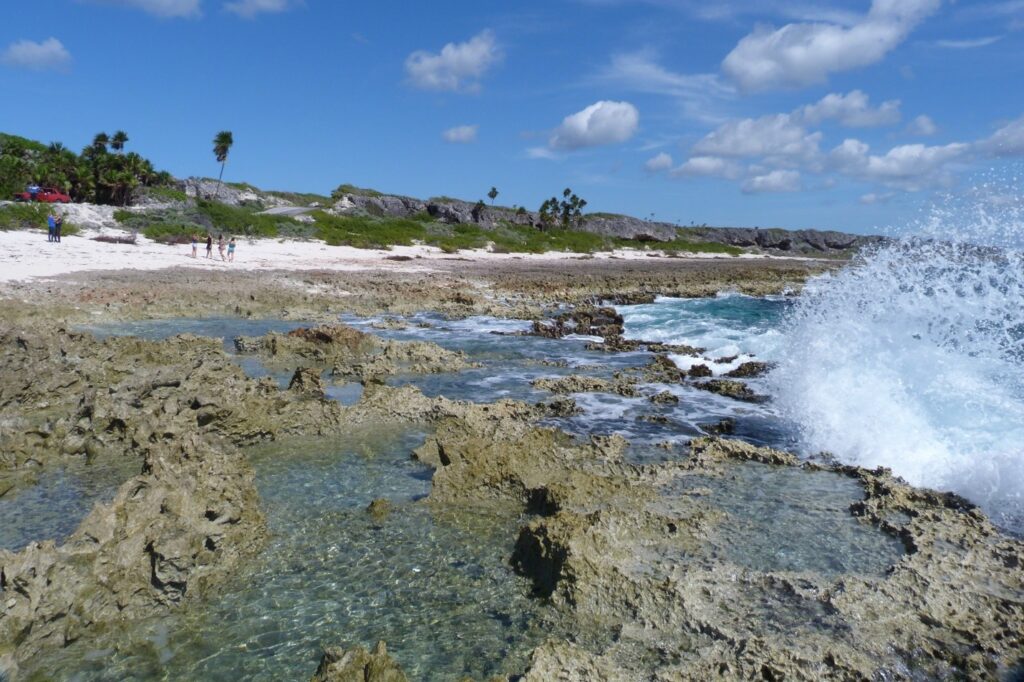Travellers who enjoy water activities, ecotourism, or breathtaking natural landscapes will find Guanahacabibes Peninsula National Park in Cuba to be a true paradise. As a UNESCO Biosphere Reserve, this national park features a variety of stunning landscapes, including picturesque beaches.
Continue reading to discover more about visiting Guanahacabibes Peninsula National Park.
About Guanahacabibes National Park in Cuba
Situated at the western tip of Cuba, approximately two hours from the town of Pinar del Río, Guanahacabibes Peninsula National Park is part of the broader Guanahacabibes Peninsula Biosphere Reserve. Established by UNESCO in 1987, this reserve spans over 31,000 acres, safeguarding the wildlife, mangroves, and woodlands of this 55-mile long and 19-mile wide peninsula.
This area is not only a breathtaking wilderness, but it also serves as a habitat for numerous species—over 170 bird species call it home, along with land crabs, deer, wild pigs, and iguanas. In total, you’ll find 700 species of plants, 35 types of reptiles, 18 mammal species, and 19 amphibian species here. The land was once inhabited by the Guanahatabeyes, Cuba’s indigenous group, who abandoned the area due to invasions by the more aggressive Taíno tribe.
As you enter the national park, your first stop will be La Bajada, a military checkpoint. It’s wise to prepare your passport in case you’re stopped. From this checkpoint, the road diverges—one path leads 9 miles to Maria la Gorda, while another stretches 38 miles to Cabo San Antonio.
How to Reach Guanahacabibes National Park
By Taxi or Private Driver
If you choose to hire a driver, you can travel from Havana, which takes about six hours, or from Pinar del Río, which takes about two hours. Keep in mind that if you hire a private driver, you will need to cover their food and lodging for the duration of your stay. Taxis can be a more economical option, but remember that you’ll need to arrange separate rides for both trips.
Car Rentals
Renting a car offers you maximum flexibility during your visit to the national park. However, be aware that renting in Cuba can be challenging due to car accident laws and limited availability.
Public Transportation
A budget-friendly option is to utilize public transportation. The easiest route involves taking an early morning bus to Pinar del Río. From there, you can catch a bus or share a ride to the next town toward Maria la Gorda. Although multiple transfers may be necessary, it is feasible to reach the park this way!
Activities in Guanahacabibes National Park
Explore María la Gorda
Maria la Gorda boasts a secluded white-sand beach, which is adjacent to some of Cuba’s premier scuba diving sites. This beach is minimally developed, featuring only one hotel, a restaurant, and a diving center.
Visitors may even spot whale sharks in these waters, and many adventurers enjoy venturing to explore underwater shipwrecks. Whether you prefer a tranquil spot to bask in the sun and appreciate the untouched shoreline or desire to dive into underwater caves, tunnels, and coral reefs, this beach is the quintessential location to experience Cuba’s tropical allure.
Dive at El Valle de Coral Negro
This area offers numerous diving locations, and El Valle de Coral Negro is among the best, featuring expansive coral walls.
Visit Cabo San Antonio
Cabo San Antonio features a historic lighthouse, a beach, and an extensive cave system, making it an excellent location for a full day’s exploration. One trail leads to a deep natural sinkhole, while another leads to Cuevas Las Perlas, a series of caves illuminated by natural skylights. Visitors are allowed to explore nearly 1,400 feet within the caves!
Observe Marine Turtles
From May to October, several species of marine turtles, including loggerheads, come ashore in the evenings to nest. Plan an evening visit to witness this remarkable natural event.
Visiting Tips for Guanahacabibes National Park
- Admission to the park is free, but hiring a guide is mandatory for your visit.
- Stop by the park’s visitor center for maps and to arrange specialized tours.
- The ideal time to visit is from November to April, during the dry season. However, summer is best if you’re interested in watching the turtles.
- Don’t forget insect repellent—there are plenty of bugs in this wilderness area!

Final Thoughts
This remote national park is not just a tropical paradise with stunning beaches; it is a vital sanctuary for countless animal and plant species. If you have a passion for exploring unspoiled nature and vibrant wilderness, a visit to Guanahacabibes National Park is truly rewarding.
Love Cuba is the leading holiday specialist for trips to Cuba in the UK. For more information regarding Cuba holidays, Multi Centre Cuba Holidays, or Tailor Made Cuba Holidays, feel free to contact our friendly team of Cuba holiday specialists at 020 8038 7100 or email enquiries@lovecuba.com.




